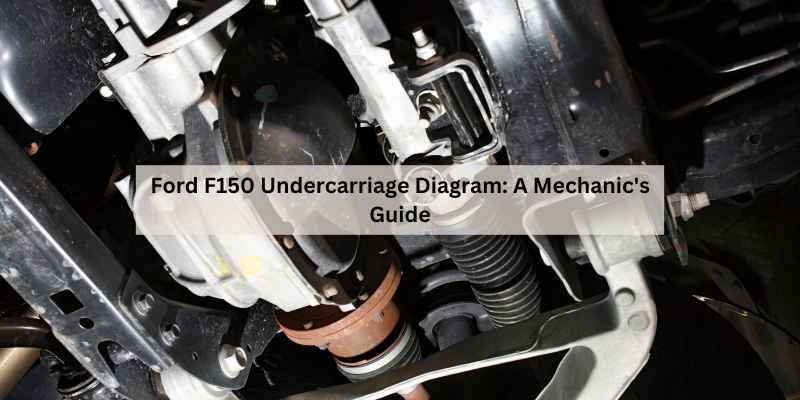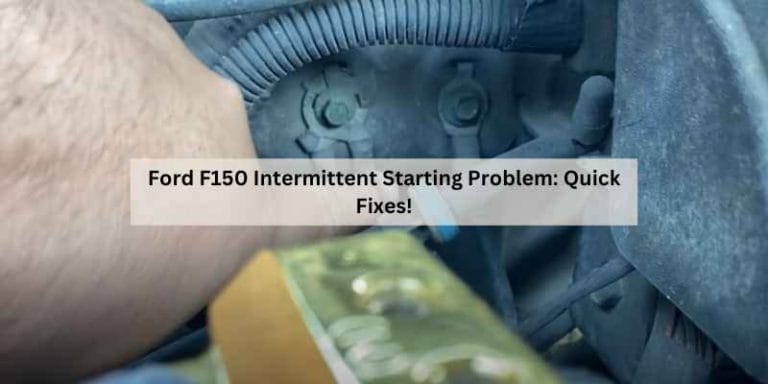Ford F150 Undercarriage Diagram: A Mechanic’s Guide
The Ford F150 undercarriage diagram provides a detailed view of the truck’s structural components. This diagram is essential for understanding maintenance and repair needs.
Understanding the undercarriage of your Ford F150 is crucial for effective vehicle maintenance and repair. The undercarriage houses vital components like the suspension system, exhaust, and drivetrain. Familiarity with these parts helps in diagnosing issues and performing routine checks. Whether you’re a DIY enthusiast or a professional mechanic, having access to a clear diagram simplifies the repair process.
This guide will explore the various elements of the F150 undercarriage, including their functions and maintenance tips. Knowing your vehicle’s undercarriage can enhance performance and longevity while ensuring safety on the road.
Introduction To The Ford F150 Undercarriage
Understanding the Ford F150 undercarriage is crucial for maintenance and safety. This knowledge helps identify potential issues early. A well-maintained undercarriage enhances vehicle performance and longevity.
Key components of the Ford F150 undercarriage include:
- Frame: Provides structural support for the truck.
- Suspension: Absorbs shocks and improves ride quality.
- Axles: Transfers power from the engine to the wheels.
- Exhaust System: Reduces emissions and noise.
- Fuel Tank: Stores gasoline or diesel for engine operation.
Breaking Down The Basics
The Ford F150 has a strong frame and structure. It supports the vehicle’s weight and provides stability. The frame is built from high-strength steel for durability. This design allows for better handling and performance.
Important components of the exhaust system include the following:
| Component | Function |
|---|---|
| Exhaust Manifold | Collects exhaust gases from the engine. |
| Catalytic Converter | Reduces harmful emissions. |
| Exhaust Pipes | Channels exhaust gases to the rear. |
| Muffler | Reduces noise from the exhaust. |
The Suspension System
The Ford F150 features a robust front suspension system. It includes independent coil springs and shock absorbers. These components help provide a smooth ride. They also improve handling on rough terrain.
Front suspension details consist of control arms and stabilizer bars. These parts enhance stability during turns. The steering knuckles connect the wheels to the suspension. This allows better steering response.
For the rear suspension, the F150 uses leaf springs. These springs provide extra strength and support. Shock absorbers in the rear help to absorb bumps. This ensures a comfortable ride for passengers.
In summary, the suspension system plays a crucial role in vehicle performance. It supports weight and enhances ride quality. Understanding these components helps in maintenance and upgrades.
Drivetrain Components
The transmission in a Ford F150 transfers power from the engine to the wheels. It uses gears to control speed and torque. An automatic transmission shifts gears on its own, providing a smoother ride.
Differentials help distribute power to the wheels. This ensures that each wheel can turn at different speeds, especially while turning. The axles connect the wheels to the differential. They also support the weight of the truck.
| Component | Function |
|---|---|
| Transmission | Transfers power from the engine |
| Differential | Distributes power to wheels |
| Axles | Connect wheels to the differential |
Fuel System And Tank Location
The fuel system in the Ford F150 is crucial for performance. It includes fuel lines and connections that transport gasoline from the tank to the engine.
Fuel lines are often made from durable materials. These materials help prevent leaks and ensure safety. Connections are designed to be secure and resistant to wear over time.
The tank placement is usually under the bed for easy access. This location helps protect the tank from damage. Shielding or skid plates can be added for extra protection.
Regular checks on the fuel system are important. Look for signs of wear or damage. Keeping the system in good condition ensures optimal fuel efficiency and performance.
Braking System Explained
The braking system of the Ford F150 is crucial for safety. Front brakes are typically disc brakes that provide effective stopping power. They consist of a rotor, caliper, and brake pads. The hydraulic system ensures consistent brake application.
For rear brakes, most F150s use drum brakes. These brakes also include shoes and a drum. Regular maintenance is key to keeping brakes in good shape. Check brake pads for wear every 30,000 miles. Inspect fluid levels and replace them if needed.
| Maintenance Tips | Frequency |
|---|---|
| Check front brake pads | Every 30,000 miles |
| Inspect brake fluid | Every 10,000 miles |
| Examine rear drum brakes | Every 40,000 miles |
Underbody Insulation And Protection
The underbody insulator serves a vital role in protecting the vehicle. It helps reduce noise and vibration from the road. This insulation also protects critical components from damage caused by debris and weather elements.
Regular checks for issues are essential. Look for signs of wear, such as cracks or tears. Inspect the attachment points to ensure the insulator remains secure. Addressing issues early prevents further damage and costly repairs.
| Inspection Area | Check for |
|---|---|
| Surface Condition | Cracks, tears, or wear |
| Attachment Points | Loose or missing fasteners |
| Material Integrity | Signs of deterioration |
Diy Maintenance And Inspection Tips
Regular inspections help keep your Ford F150 in great shape. Focus on key areas like the frame, suspension, and exhaust system. Check for any signs of rust, corrosion, or damage. Look at the brake lines for leaks and wear.
Pay special attention to the shock absorbers and springs. Ensure they are not worn out or damaged. Inspect bushings and mounts for cracks. Tire condition is also important; check for uneven wear.
Address common undercarriage problems quickly. Look for loose bolts and fasteners. Replace any damaged components to avoid bigger issues. Regular maintenance helps prolong your vehicle’s life.
Finding And Reading Undercarriage Diagrams
Finding and reading the Ford F150 undercarriage diagrams can be essential for maintenance. Accessing these diagrams helps in identifying parts and their functions. Ford’s official website provides comprehensive diagrams for various models.
Interpreting these diagrams is key for effective maintenance and repair. Familiarize yourself with symbols and labels used in the diagrams. Each part is usually labeled with a part number. Understanding this information can simplify repairs and part replacements.
| Diagram Type | Description |
|---|---|
| Exhaust Diagram | Details the exhaust system components. |
| Suspension Diagram | Shows the suspension parts and layout. |
| Frame Diagram | Illustrates the frame structure and support. |
Frequently Asked Questions
What Is The Felt Cover Under My F-150?
The felt cover under your F-150 acts as an underbody insulator. It helps reduce noise and protect vital components from dirt and moisture. This cover enhances overall performance and longevity of your vehicle. Regular inspection ensures it remains intact for optimal protection.
What Is The Ford Underbody Insulator Recall?
The Ford underbody insulator recall affects certain models due to potential fire risks. The insulator may retain heat, increasing fire hazards. Owners should contact dealers for inspections and possible replacements. Stay informed for safety updates and recall details from Ford.
What Does The F Stand For In F-150?
The “F” in F-150 stands for “Fleet. ” It indicates the truck’s design for fleet use, similar to other models like the E-Series. The F-150 is part of Ford’s F-Series lineup, known for its reliability and versatility.
What Is A Dent Side Ford Truck?
A dent side Ford truck refers to models produced between 1973 and 1986. It features a distinctive body style with a noticeable crease or “dent” along the sides. This design sets it apart from previous and later Ford truck generations.
Conclusion
Understanding the Ford F150 undercarriage is essential for maintenance and repairs. The diagram provides valuable insights into the truck’s components. Familiarity with these parts can enhance your driving experience and vehicle longevity. Always refer to the diagram for accurate information.
Your F150 deserves the best care possible.







